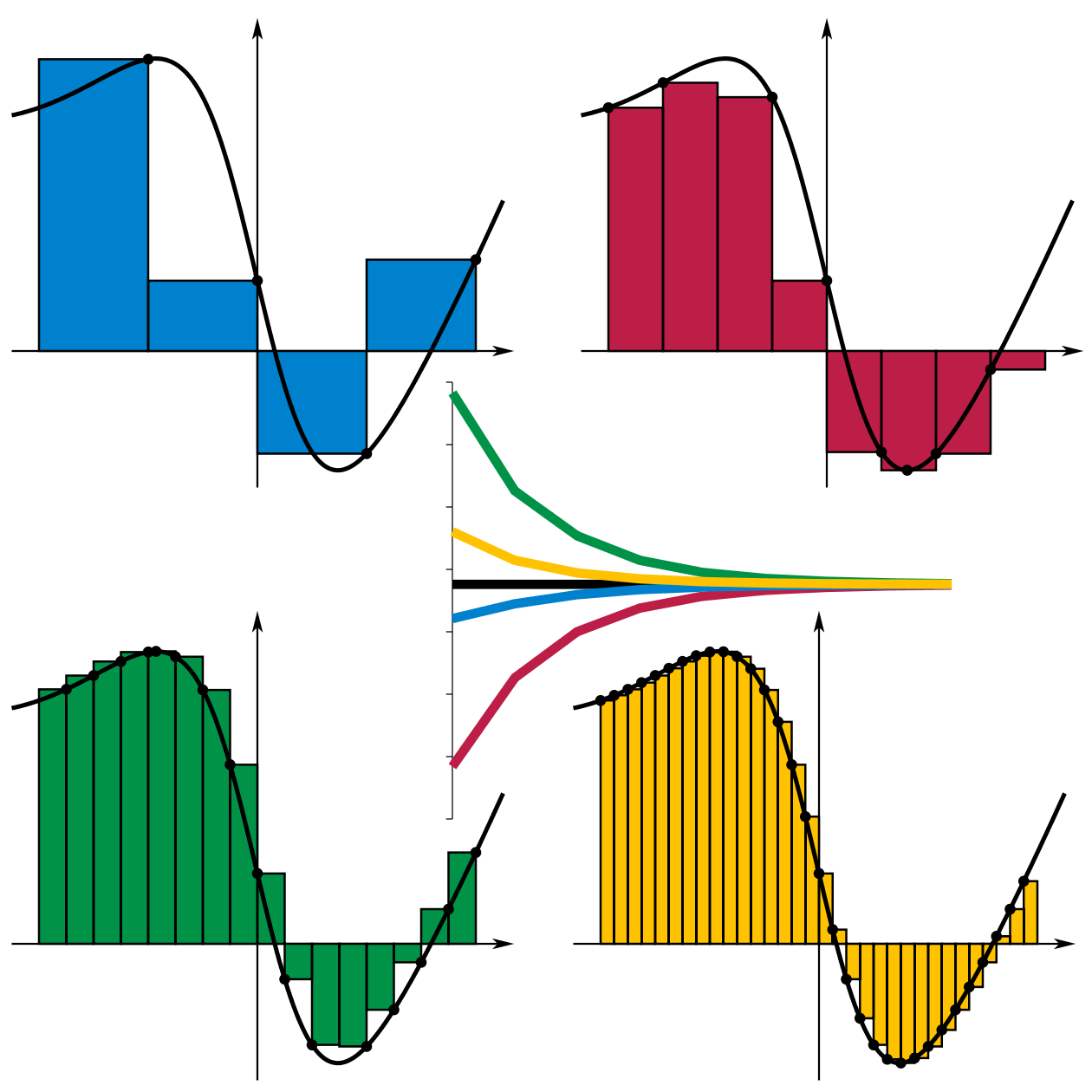Example 1
Input list of rectangles: [0, 1, 2, 3, 4, 5]
Input rectangle width: 1.5
Output area: 22.5
The simple problem here is to sum the area of a bunch of rectangles with different heights but the same width. That's all you need to know. But if you don't mind learning a bit of calculus, read on.
The slightly longer version is that we're trying to calculate the area under a complicated line or curve (the black line in the figure below). One way to do this is to draw rectangles under the curve and just add up the areas of all these rectangles. You can choose the rectangles in a few different ways but the idea is that if you use more and more rectangles, you'll get a more accurate answer (see figure caption).
If the black curve is described by a function $f(x)$ then the area under the curve is the definite integral of $f$ between some endpoints $a$ and $b$ $$ \int_a^b f(x) \, dx \approx \sum_{k=0}^N f(x_i) \Delta x $$ where we decided to use $N$ rectangles each of width $\Delta x$. The height of the $i^\textrm{th}$ rectangle is $f(x_i)$ which can be chosen in a few different ways but is given in this problem.

Input: A list of rectangle heights (negative heights give a rectangle "negative area"), and a rectangle width.
Output: The sum of the rectangle areas.
| Difficulty | Timesink | ||
|---|---|---|---|
| Function | area_of_rectangles(rectangle_heights, rectangle_width) | ||
You must be logged in to view your submissions.
Let us know what you think about this problem! Was it too hard? Difficult to understand? Also feel free to discuss the problem, ask questions, and post cool stuff on Discourse. You should be able see a discussion thread below. Would be nice if you don't post solutions in there but if you do then please organize and document your code well so others can learn from it.